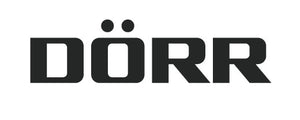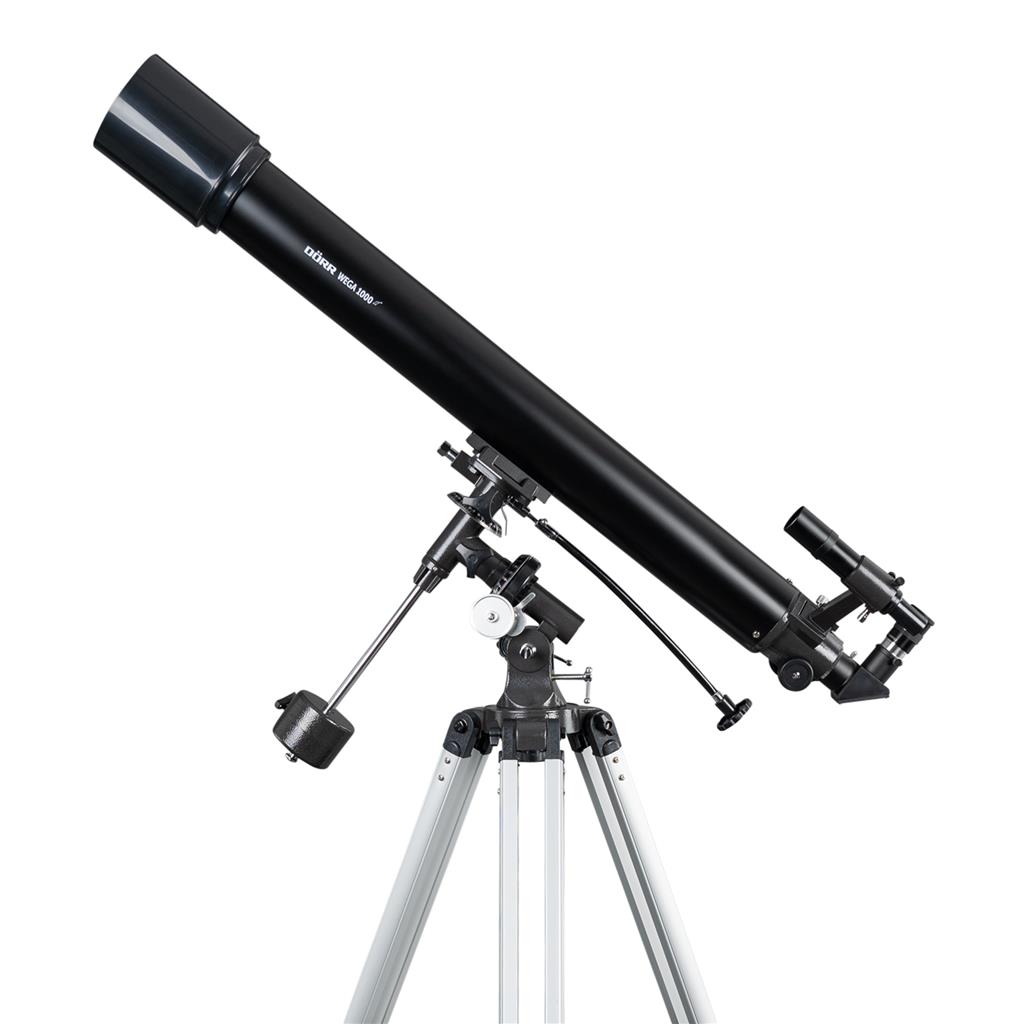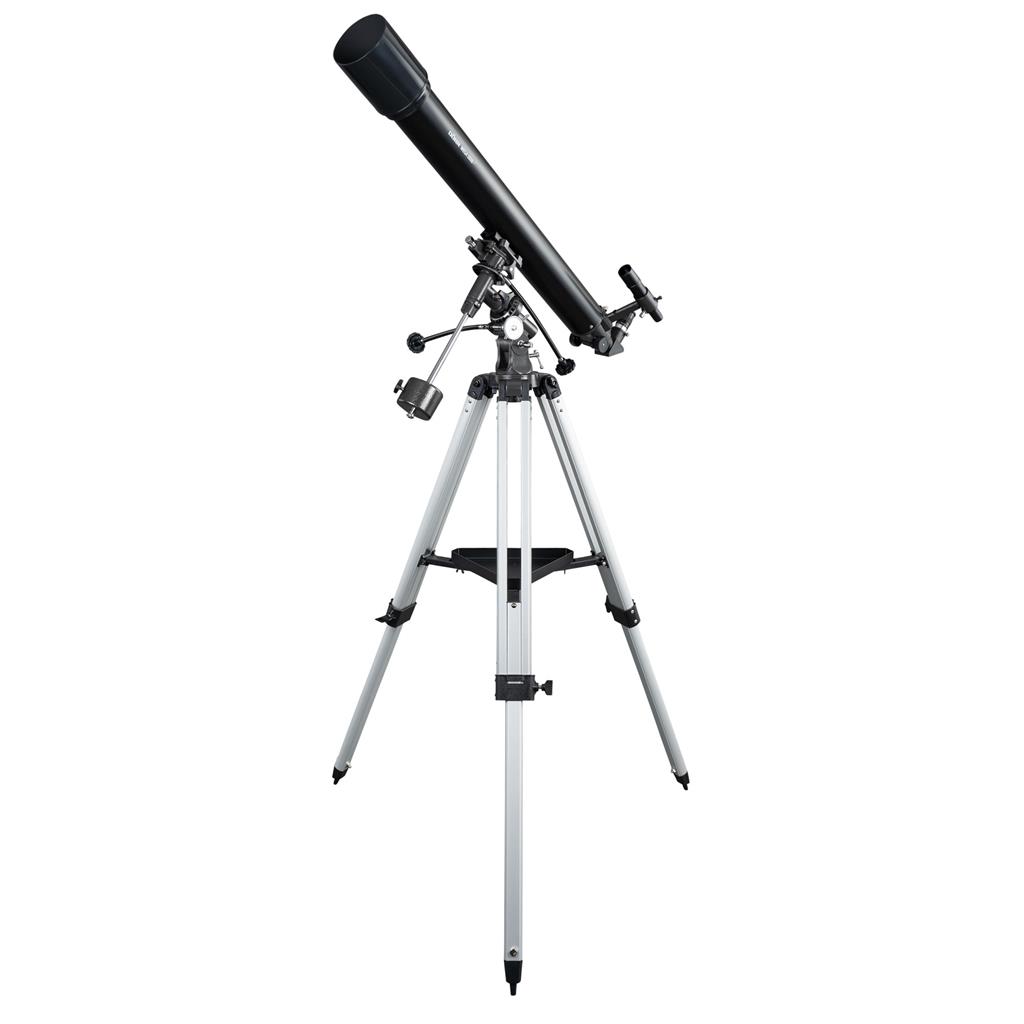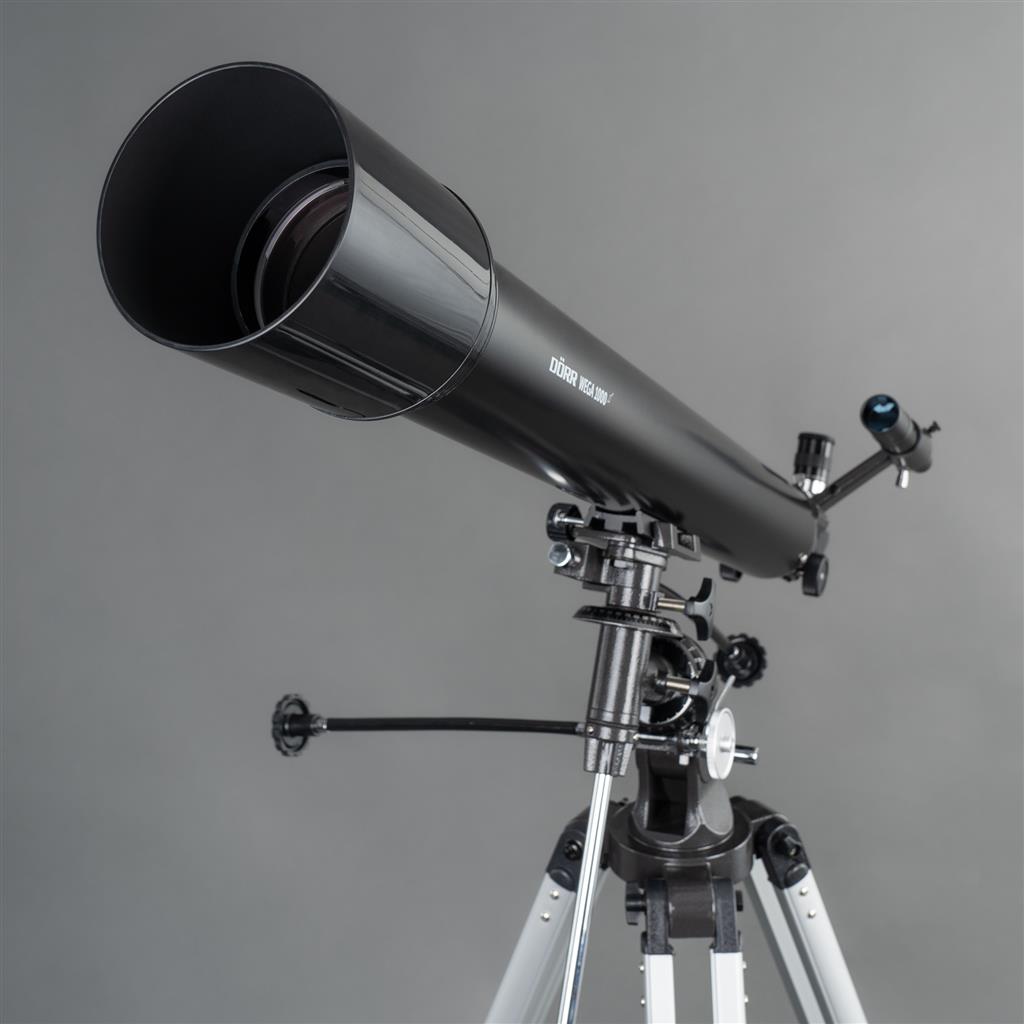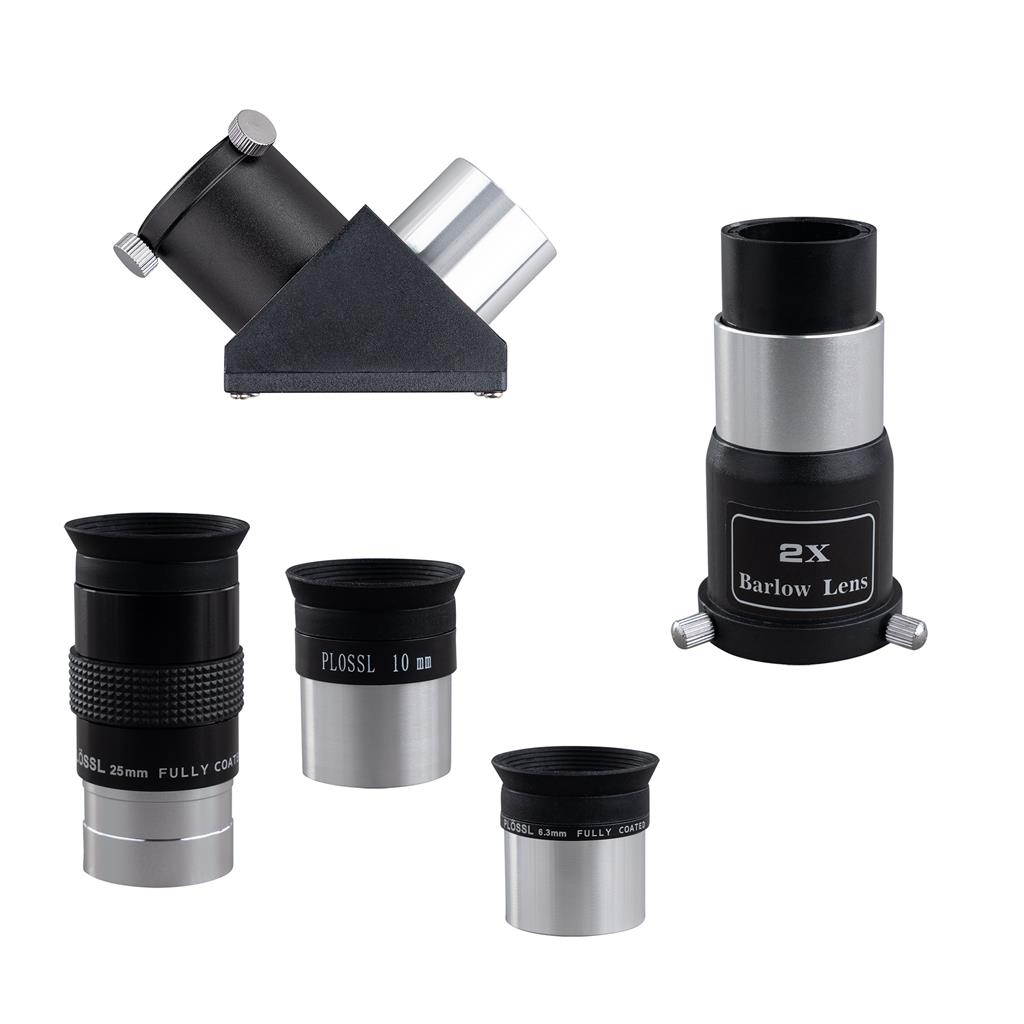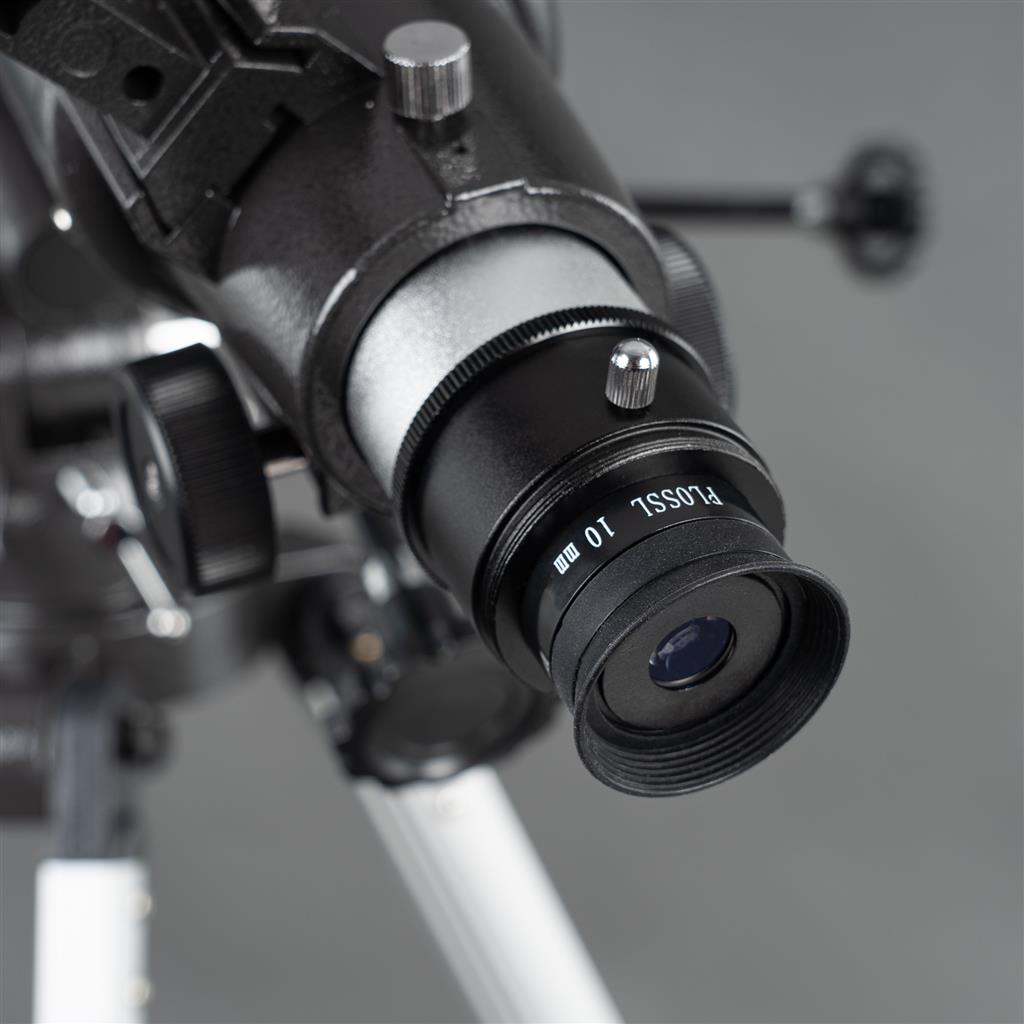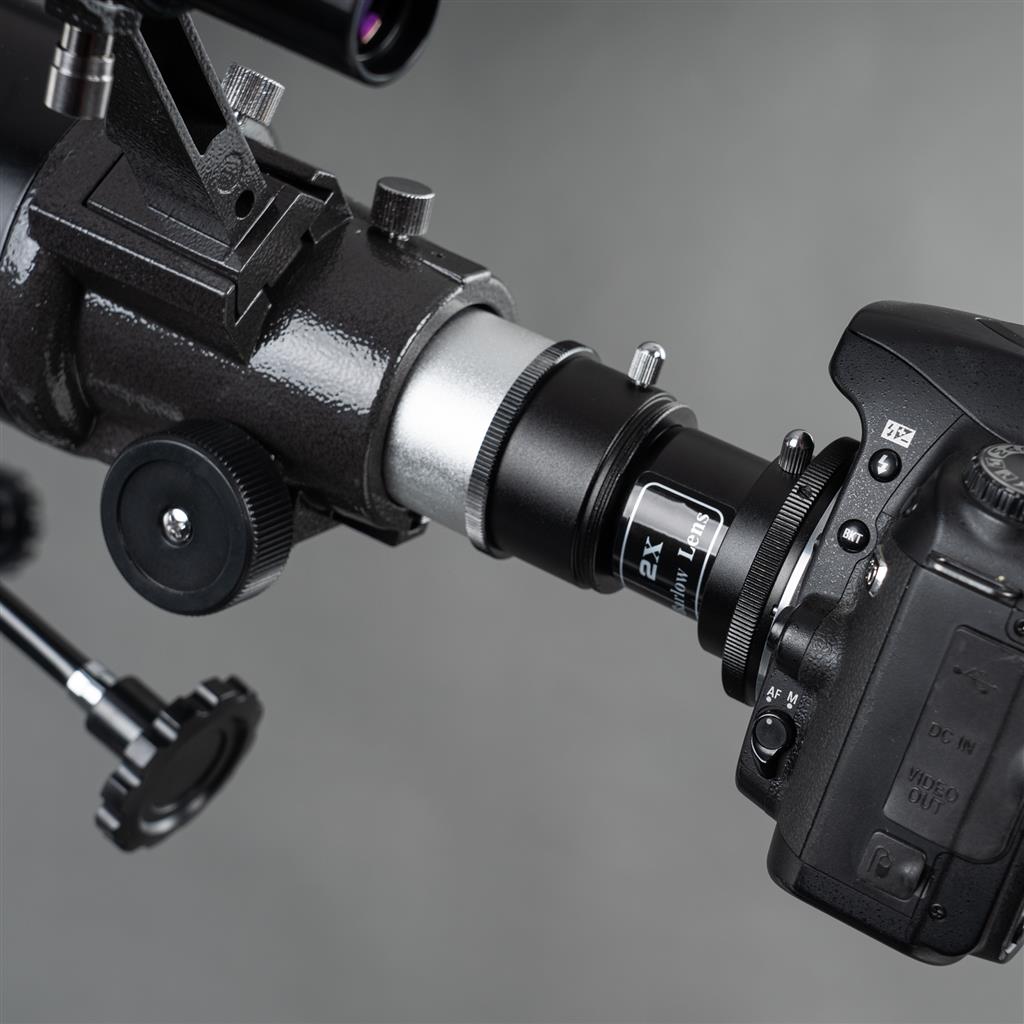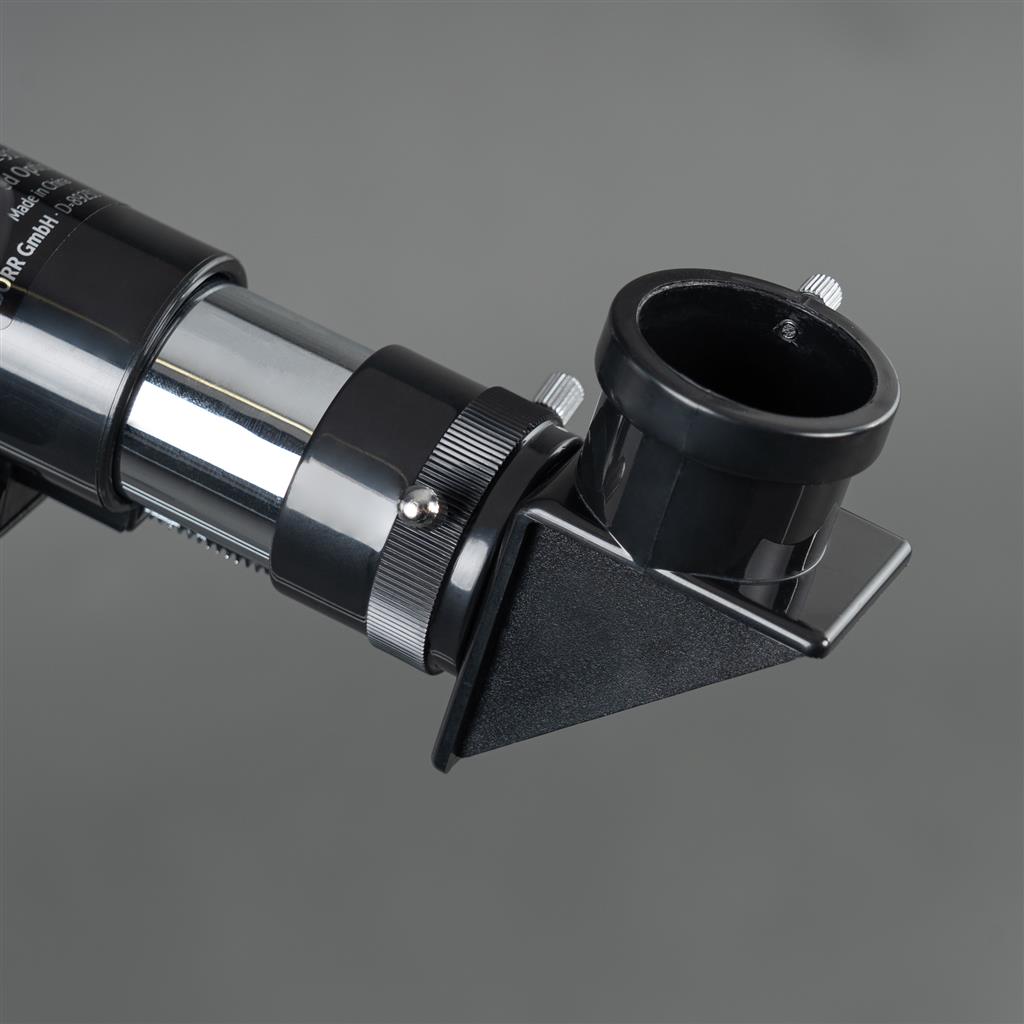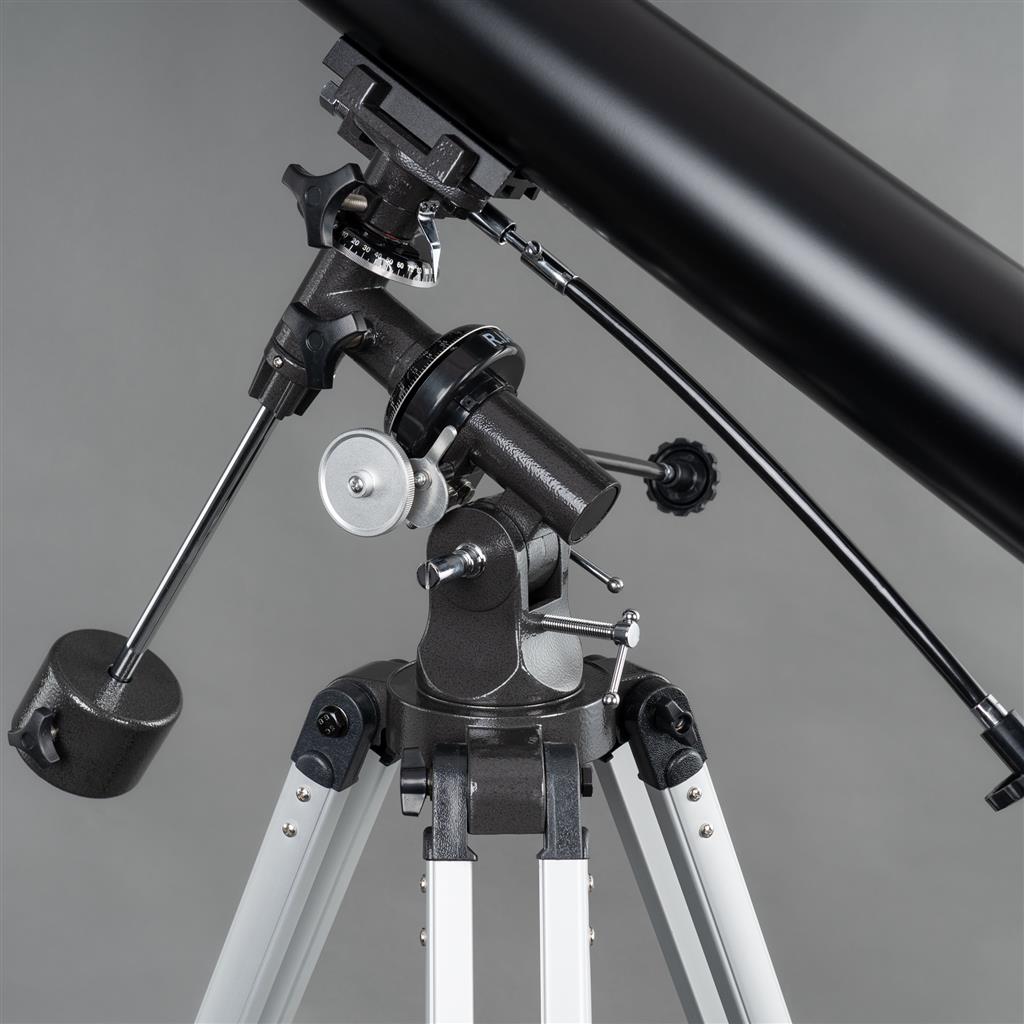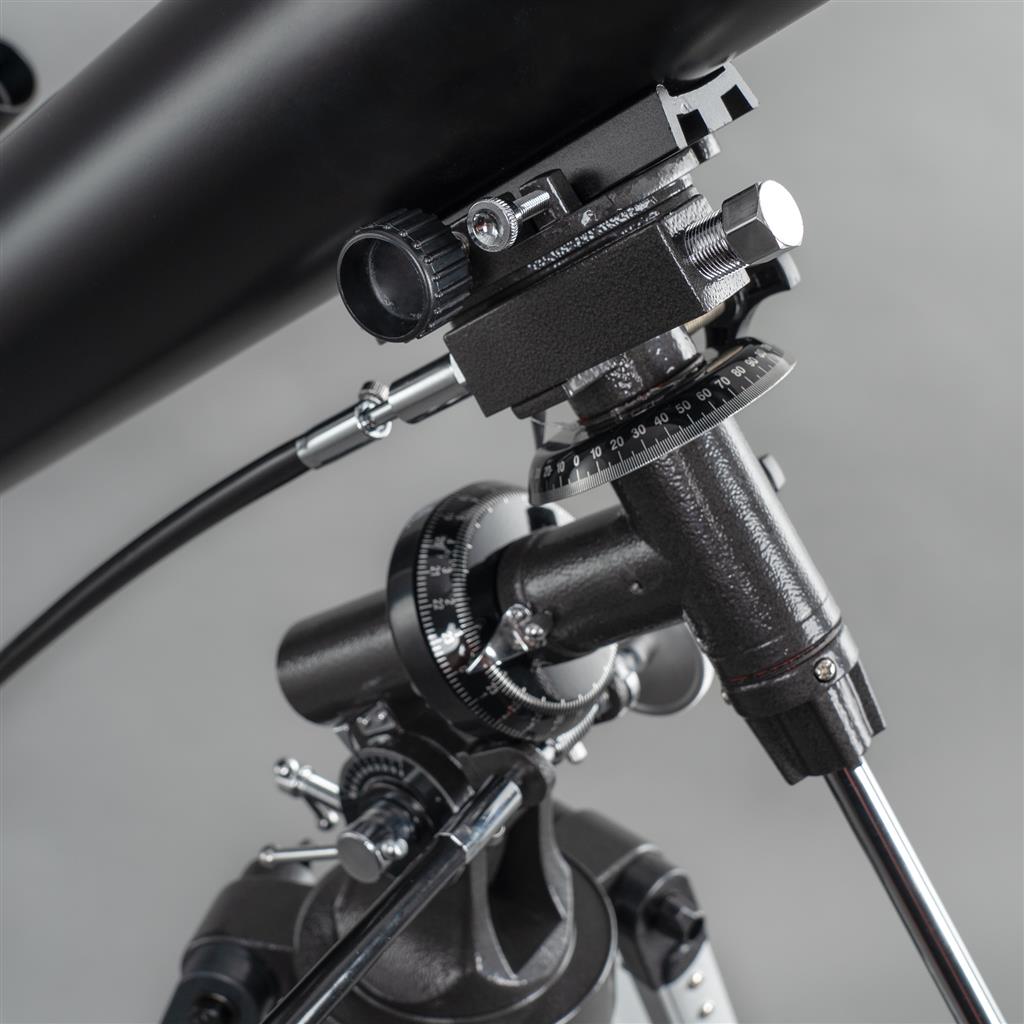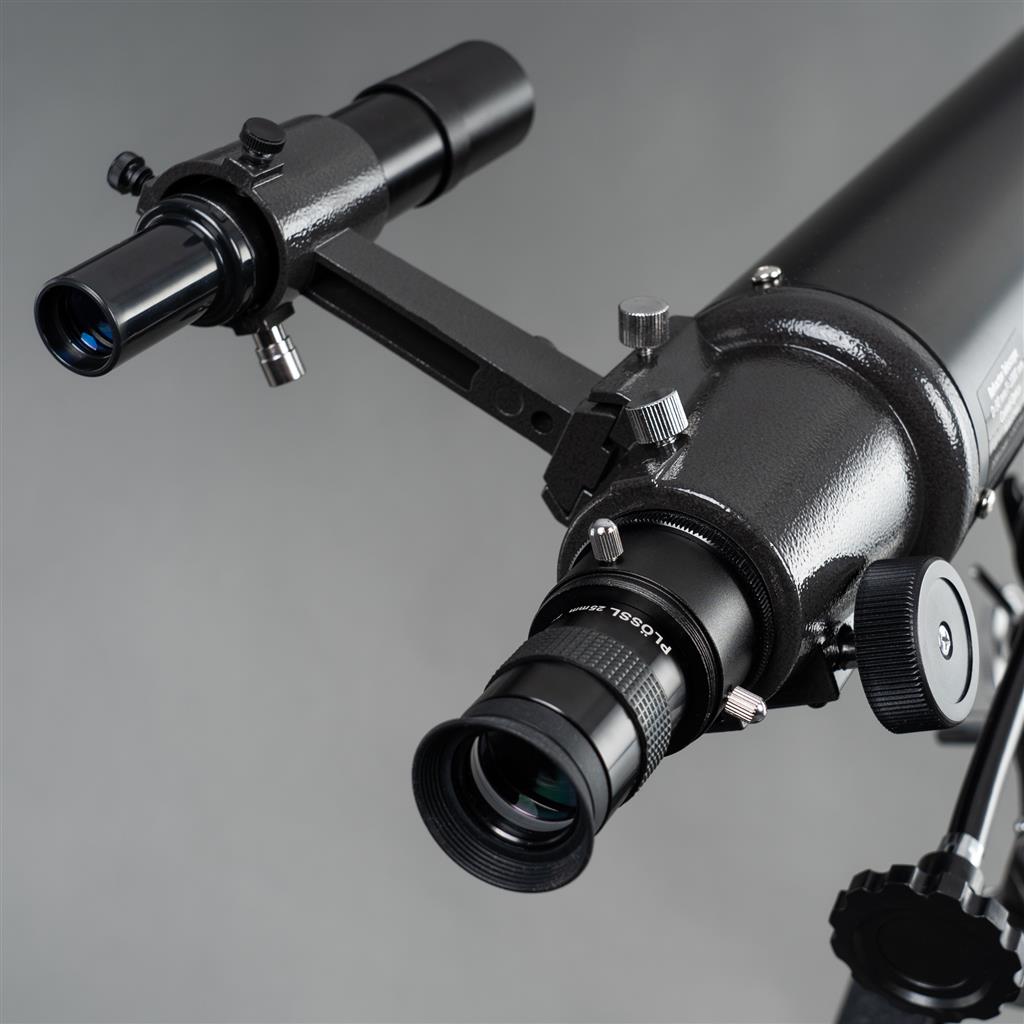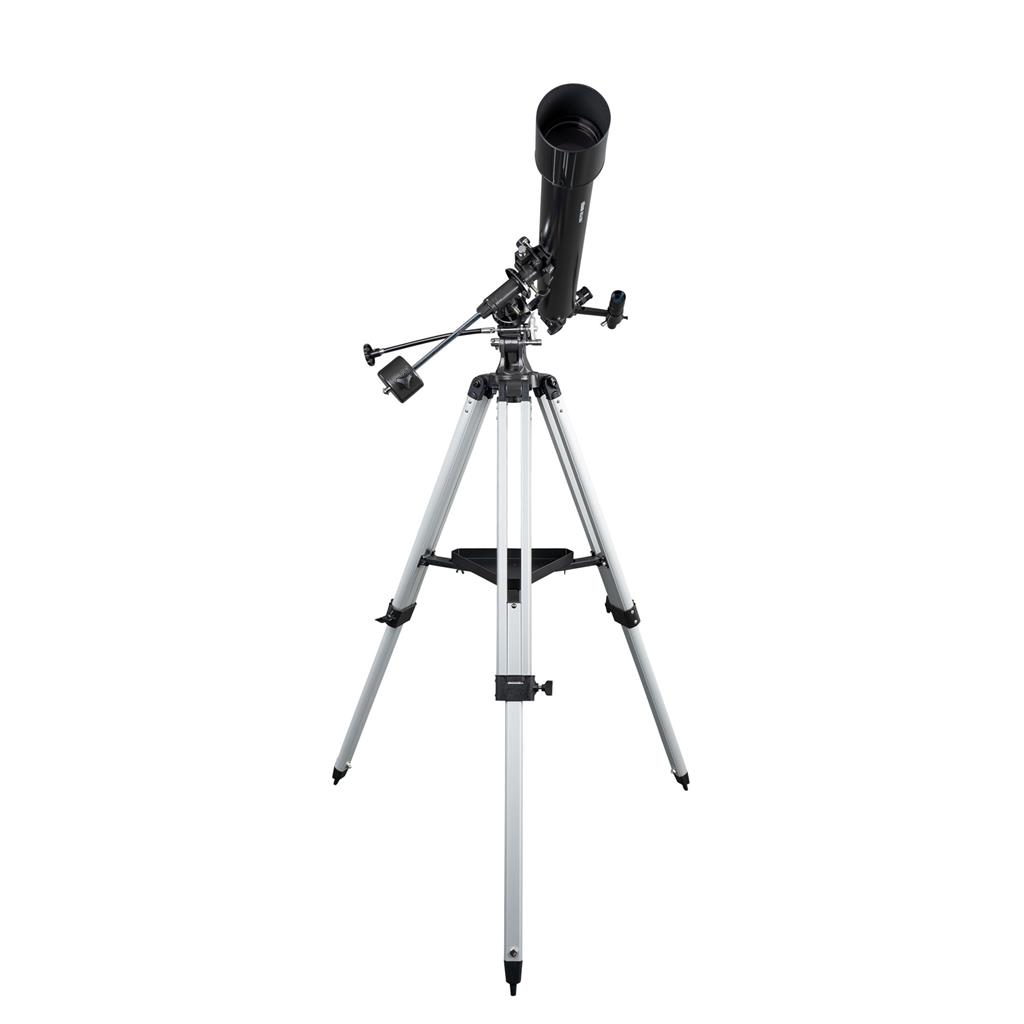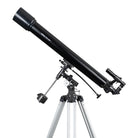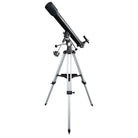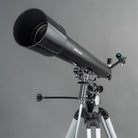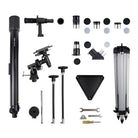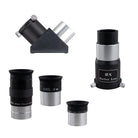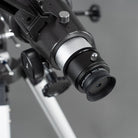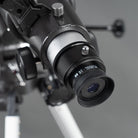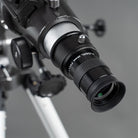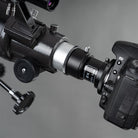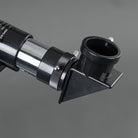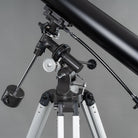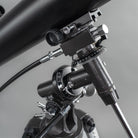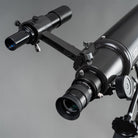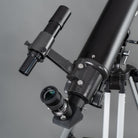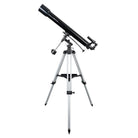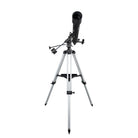WEGA 1000 Refractor Telescope – The Classic for Clear and Precise Sky Observations
- Traditional lens telescope for ambitious beginners & advanced hobby astronomers
- 90 mm aperture & 1000 mm focal length
- Magnification 40 – 318x
- Stable EQ-2 mount for accurate tracking
- Achromatic 2x Barlow lens with camera connection (T2 thread)
- Robust, height-adjustable aluminum tripod with accessory tray
- 3 fully coated Plössl eyepieces (PL6.3 / PL10 / PL25)
- Includes 6x30 finder scope, 90° diagonal mirror & moon filter
- Bright, high-contrast and colour-true imaging
- Matte black optical tube – elegant and reflection-free
The DÖRR WEGA 1000 Refractor Telescope is the perfect choice for anyone who values classic optics, ease of use, and precise viewing results. It’s ideal for both ambitious beginners and experienced stargazers who want to explore the night sky in fine detail.
The WEGA 1000 is stable, user-friendly, and fully equipped: EQ-2 mount, aluminum tripod, finder scope, three fully coated eyepieces, achromatic 2x Barlow lens with camera connection, diagonal mirror, and moon filter are all included.
Observe the Moon, planets, stars, nebulae, open star clusters, and distant galaxies – all with sharp, high-contrast, and colour-neutral clarity that will inspire you.
The Telescope – A True Classic with Lens Optics
The DÖRR WEGA 1000 is a classic refracting telescope – the oldest and most traditional design in telescope optics. Light is collected and focused by precisely ground lenses, then magnified through the eyepiece for a brilliant image.
Since Galileo Galilei first used a refractor in 1609 to discover Jupiter’s moons, this optical system has remained a favorite for its sharpness, color accuracy, and mechanical simplicity.
With a focal length of 1000 mm and a 90 mm aperture, the WEGA 1000 delivers excellent optical performance, revealing fine planetary details as well as faint deep-sky galaxies.
The achromatic lens design minimizes color aberrations, ensuring bright, razor-sharp, and color-true images — perfect for lunar and planetary observations.

Aluminum Tripod – Stable Yet Lightweight
The sturdy aluminum tripod combines rigid stability with low weight, making it easy to transport and ideal for use in different locations. Its infinitely adjustable legs allow comfortable, upright viewing for users of all heights.
A large accessory tray between the legs provides ample space for eyepieces and accessories — everything safely stored and within easy reach.
EQ-2 Mount – Smooth and Accurate Tracking
The EQ-2 equatorial mount ensures precise alignment and tracking of celestial objects.
Once aligned with Earth’s axis, you only need to move one control to compensate for Earth’s rotation — keeping your target centred in view. Fine adjustments are made manually using flexible control cables with knobs, allowing smooth and precise movement.
A counterweight and solid tube rings keep the telescope perfectly balanced for stable operation, even at high magnifications.
The EQ-2 mount offers excellent stability for precise visual tracking and is an ideal entry point for basic astrophotography.
Setup & Operation – Quick, Easy, and Comfortable
The WEGA 1000 is designed for fast, intuitive setup and effortless operation. Track your target smoothly using a single control knob, while dual focusing wheels allow precise fine-tuning of image sharpness. All controls are ergonomically positioned, ensuring comfort during extended observation sessions.
Finder Scope 6x30 – Quick and Easy Targeting
The 6x30 finder scope is mounted parallel to the main optical tube and makes locating celestial objects quick and easy. After initial alignment, its 6x magnification and 30 mm aperture provide a wide, bright field of view — perfect for targeting and centering your observation object before switching to the main telescope.

Fully Coated Plössl Eyepieces – For Bright, Sharp Views
Eyepieces are a crucial component of the optical system, determining the magnification and viewing quality. The WEGA 1000 includes three high-quality, fully coated Plössl eyepieces with a standard 1.25“-barrel diameter. Each eyepiece uses a four-element optical design for bright, sharp, and contrast-rich images:
- PL6.3 (6.3 mm, Plössl): High-magnification eyepiece ideal for detailed views of planets and lunar craters – 159x magnification
- PL10 (10 mm, Plössl): Versatile all-round eyepiece with clear, balanced imaging – 100x magnification
- PL25 (25 mm, Plössl): Wide-field eyepiece perfect for deep-sky exploration and open star clusters – 40x magnification
The fully coated (FC) optics maximize light transmission and minimize reflections — producing bright, color-accurate, and high-contrast images.
Achromatic 2x Barlow Lens – Double the Power with Camera Connection
The included achromatic 2x Barlow lens doubles the magnification of each eyepiece and features a T2 camera thread for direct connection to most DSLR and mirrorless cameras (via optional DÖRR T2 adapter).
With the Barlow lens attached, magnifications increase as follows:
- PL6.3 → 318x*
- PL10 → 200x*
- PL25 → 80x
*The recommended maximum useful magnification for the WEGA 1000 is around 180x. Higher magnifications are technically possible but may result in a softer image due to atmospheric turbulence.
90° Diagonal Mirror – For Comfortable Viewing
The supplied 90° diagonal mirror is placed between the telescope and the eyepiece. It corrects the image orientation and deflects the light path by 90°, allowing you to look comfortably down into the telescope from above without having to bend or twist. This provides a natural image orientation and ensures greater comfort during extended observation sessions.
Moon Filter – For Glare-Free Views
The included moon filter simply screws into the eyepiece. It reduces brightness like a pair of sunglasses, providing comfortable, high-contrast lunar views, especially during full Moon phases. It’s also highly recommended for bright planetary objects such as Venus.
💡 Tips & Tricks
More technical details can be found under the Specifications tab. In the Downloads section, you’ll find useful Tips & Tricks to help you get started with your observations.
⚠️ Important Safety Notes
- Never look directly at or near the Sun through the telescope or finder scope — doing so can cause permanent eye damage or blindness.
- Not a toy! Children must use the telescope only under adult supervision.
